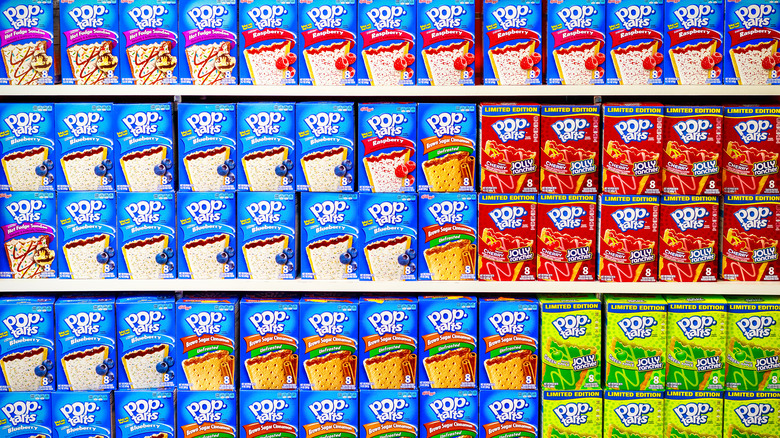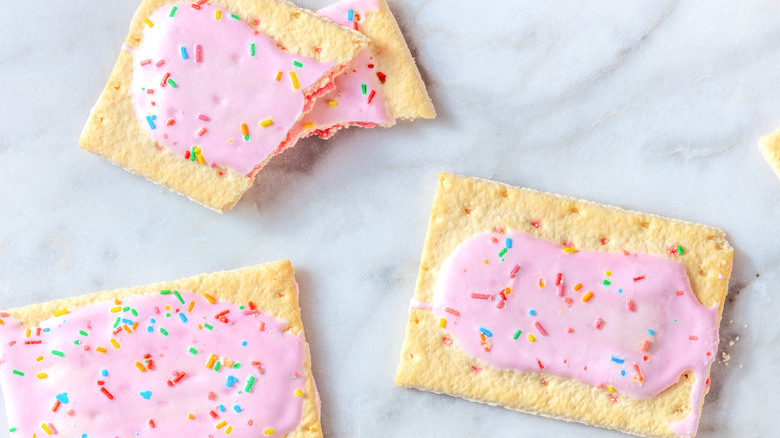The Surprising Reason Pop-Tarts Even Exist
Who among us doesn't have some connection to Pop-Tarts? Maybe you, like Cindy Crawford, flaunted your ability to save them longer than your siblings and then gleefully ate them in front of their Pop-Tart-less faces (via The Chicago Tribune). Maybe the smell of one freshly popped out of the toaster brings back memories of rushed mornings getting ready for school. Maybe you shared the two-packs with your best friend. Maybe they're still your go-to midnight snack.
Pop-Tarts are divisive: We love their fruity or sweet and desserty fillings, their layer of frosting and sprinkles, and their crumbly pastry shell, but most of us also acknowledge that their crusts can be a little akin to cardboard, and these treats are clearly factory-made (which they are, by Kellogg's). Whatever your Pop-Tart stance, the breakfast food-slash-snack is a staple of Americana.
According to The Chicago Tribune, they were one of the most requested items by U.S. soldiers during the Persian Gulf War. The Wall Street Journal reported in 2014 that sales had been on the rise for 32 years straight, meaning that Pop-Tarts have only been getting more and more popular, especially among kids and teens. In fact, Kellogg's sells about 2 billion Pop-Tarts per year, says HuffPost. With this kind of reputation, it might come as a surprise that Pop-Tarts exist because of a development in, of all things, dog food, plus one cringe-worthy marketing mistake.
Pop-Tarts were born out of a rivalry and a seized opportunity
Mega-brands Kellogg's and Post both have headquarters in Battle Creek, Michigan, where in the 1960s, their rivalry thrived (via The Chicago Tribune). In the late 1950s, Post developed Tang with technology that captured the nutrients of orange juice in a way that could be stored at room temperature. Then, it innovated a semi-moist dog food that could also be stored at room temperature.
At this time, many mothers were heading into the workforce for the first time and family breakfasts were becoming more of an on-the-go affair. People were seeking convenience, and a shelf-stable item that was easy to prepare was just the ticket. Building on its developments, Post figured out how to keep fruit fillings fresh at room temperature, and unveiled its breakfast pastries in 1964: Country Squares. The media buzz was big, but the public didn't bite.
According to Thrillist, while Post went back to the drawing board with Country Squares, it left an opening, and Kellogg's seized it. The very same year, Kellogg's debuted Pop-Tarts. HuffPost says they were originally named Fruit Scones, but the name Pop-Tart quickly replaced it, inspired by Andy Warhol's "Pop-Art." Immediately, Kellogg's had a hit, and even initially sold out of its entire inventory.
If Americans were clamoring for quick and easy toaster pastries, where did Post go wrong? Possibly the name, Thrillist says. At the time, "square" meant "lame," "dweeb," and "boring." Thanks to a more exciting name, we have Pop-Tarts in every imaginable flavor today.

